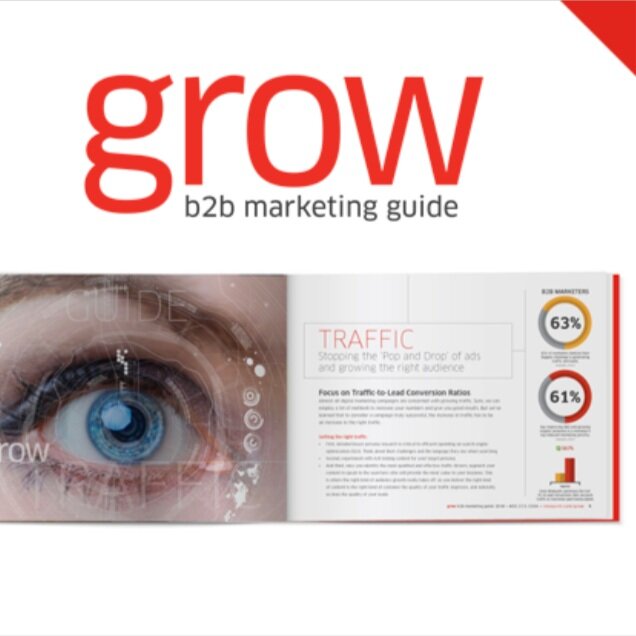Budgeting: It’s the immovable object that stands in the way of any executive or manager’s greatest departmental ambitions. Adhering to the limitations set by the bottom line is a burden we all have to bear, but that doesn’t make the act of budgeting for the next quarter or year ahead any less of a nuisance.
But it’s an important chore. Smart budgeting makes all the difference, especially for small to mid-sized B2B companies whose efforts and departments plan for growth in 2017. As the B2B world has gotten wise to the benefits of content marketing, balancing that part of the budget has taken on even greater importance.
B2B enterprises should aim for marketing budgets that are prudently portioned for effective campaigns with a healthy return on investment. Figuring out next year’s marketing budget is a unique case from company to company, but ask yourself these three questions when the time comes to set it in stone:
1. How mature is your marketing strategy?
Building a proper B2B inbound marketing process takes time. As much as the basic elements of inbound are rooted in simple, repeatable actions—creating meaningful content, promoting it with methods including social media and search engine optimization and analyzing the results—a company’s entire inbound strategy needs months, if not years, to fully mature and reach predetermined goals.
This, combined with some post-recession normalization, explains intended increases in marketing budgets across the board over the last few years. It can be tough to get bigger marketing budgets approved, though, especially with the tendency of companies to reduce them when they need to save money.
![]() A company’s entire inbound strategy needs months, if not years, to fully mature and reach predetermined goals.
A company’s entire inbound strategy needs months, if not years, to fully mature and reach predetermined goals. ![]()
Though 10 percent of projected annual revenue is a common rule of thumb for B2B marketing budgets, the goal of maturing your company’s marketing can make a good case for spending more. Allocate more money to your marketing judiciously, with a clear idea of what the extra money should accomplish.
Create a bigger war chest for scaling operations to match the level of buyer awareness you want to achieve in 2017. Identify how close you are to achieving a sophisticated inbound marketing operation, then set goals for improved strategy, analysis, organization-wide scaling, and conversions. Budget for taking the next step towards a more mature marketing strategy and improving upon last year’s aims.
2. How should we partition our overall marketing budget?
To make year-over-year improvements to your marketing, identify which aspects will yield demonstrable results when scaled up. Smart B2B marketing budgets begin with proper allocation and solidify their merit by using budget space to improve the channels that need a boost with a focus on ROI.
B2B content creation is the big one, since it serves as the linchpin of modern marketing. This is likely to be around one-third of your overall budget, with several line items to consider. It starts with paying the people who write your blog posts, create your videos and design infographics or other visual marketing collateral. If you’re planning for growth, budget for adding more talent and creating training materials to get everyone on the same page.
But distribution is also a significant expense that can make or break the efficacy of your content. Consider the cost of creative ways to get your content in front of the right eyeballs and potentially employing some outside help on content-related matters (more on that in a bit). Paid web and social media ads are an imperative expenditure, as they keep your company in front of searchers and reach target buyers in different demographics. If your company is looking to increase the number of leads generated in 2017, spend more money here.
Don’t forget about analytics, as well. Gathering data helps both in the middle of a budgeted year—by providing information for agile, quick adjustments to your spend—and helps clarify your future strategy. Consider putting more money into social analytics to learn what social media can do for your B2B company and your target prospects before you make a heavy investment in utilizing it.
3. Who (or what) is doing the work?
We talked about investing in the people who create your content. But consider whether you source in-house or outside. Outsourcing elements of your overall strategy generally costs less than hiring on new internal talent, and having an agency in your corner can alleviate the stress of handling B2B marketing’s diverse array of tasks. An agency will be able to assign five or more specialists to your account for the cost of two people on your staff.
Content creation isn’t the only thing you need people to maintain—always keep in mind improvements to your website itself. With the state of B2B marketing in latter half of this decade, it can be easy to forget your website—the destination your content and advertising all should point to—is something you continually improve upon.
In what state is your company’s internal IT? If you have a lean in-house staff for programming, maintenance and security, think about what improvements you need then determine whether you can accomplish them with a few key hires or by employing the power of an effective IT partner.
Remember, though, to examine your budget for redundancies. Don’t pay for multiple tools that do the same thing, such as automation platforms or CRMs that overlap in their purviews. Smart budgeting isn’t just allocating money properly; it’s also identifying and removing any bloat from it, thus making your strategy more agile.
Budgeting your marketing costs as a B2B company is a subjective task, one that relies on your recent history and specific goals and objectives for the year ahead. If there are any mandatory rules, they are:
☑️ Spend a healthy portion for content creation and distribution as this creates conversions
☑️ Leave plenty available for search, web and social advertising as this drives the traffic
The rest relies on what you want to improve upon and where you want your marketing to go in the new year. It’s not a perfect science, but the more you pay attention to your past efforts—and industry-wide trends for 2017 and beyond—the better your forecasting can be, thus allowing you to budget more precisely in the future. ![]()







 By
By 
